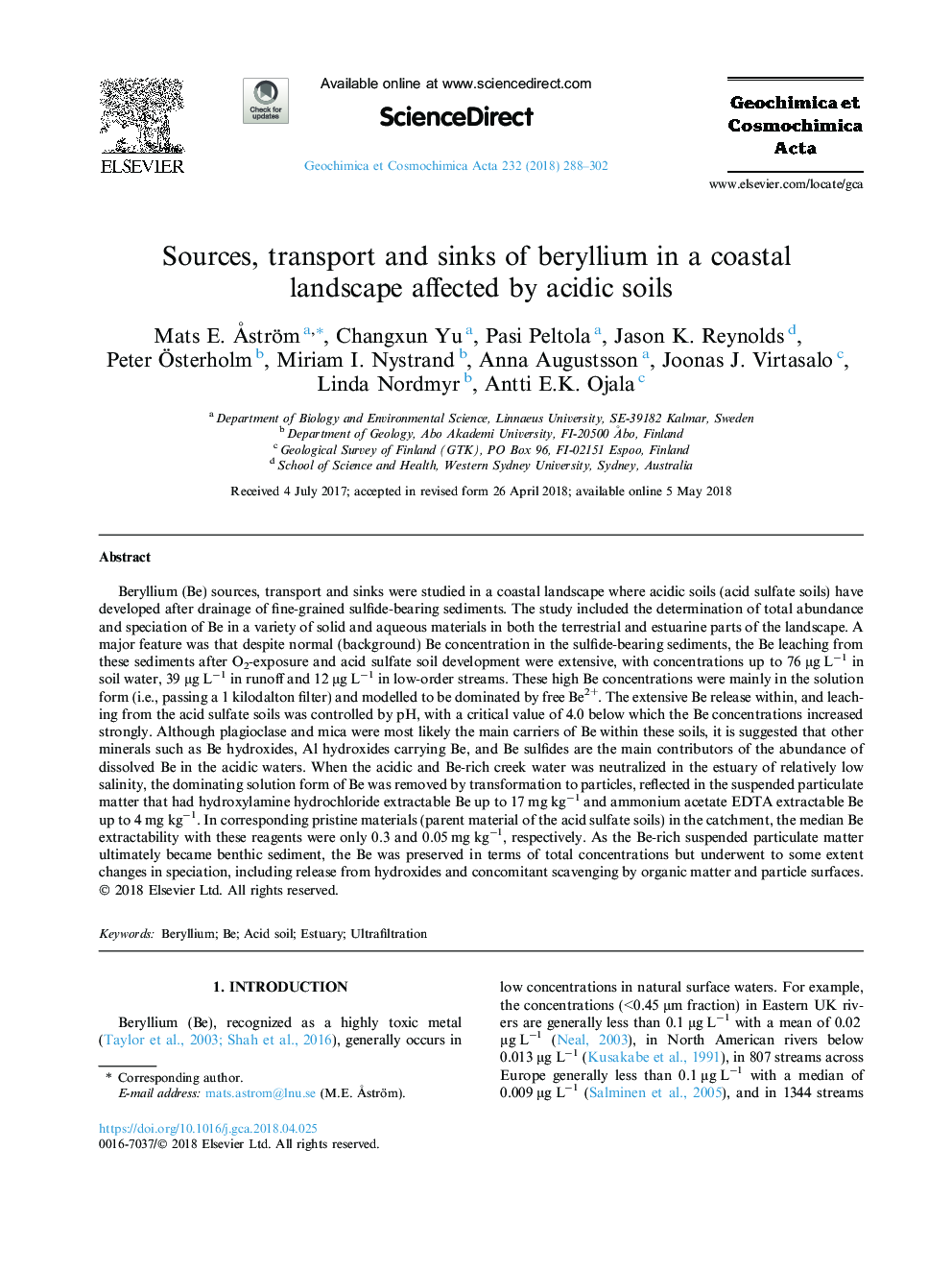| Article ID | Journal | Published Year | Pages | File Type |
|---|---|---|---|---|
| 8910739 | Geochimica et Cosmochimica Acta | 2018 | 15 Pages |
Abstract
Beryllium (Be) sources, transport and sinks were studied in a coastal landscape where acidic soils (acid sulfate soils) have developed after drainage of fine-grained sulfide-bearing sediments. The study included the determination of total abundance and speciation of Be in a variety of solid and aqueous materials in both the terrestrial and estuarine parts of the landscape. A major feature was that despite normal (background) Be concentration in the sulfide-bearing sediments, the Be leaching from these sediments after O2-exposure and acid sulfate soil development were extensive, with concentrations up to 76â¯Î¼gâ¯Lâ1 in soil water, 39â¯Î¼gâ¯Lâ1 in runoff and 12â¯Î¼gâ¯Lâ1 in low-order streams. These high Be concentrations were mainly in the solution form (i.e., passing a 1 kilodalton filter) and modelled to be dominated by free Be2+. The extensive Be release within, and leaching from the acid sulfate soils was controlled by pH, with a critical value of 4.0 below which the Be concentrations increased strongly. Although plagioclase and mica were most likely the main carriers of Be within these soils, it is suggested that other minerals such as Be hydroxides, Al hydroxides carrying Be, and Be sulfides are the main contributors of the abundance of dissolved Be in the acidic waters. When the acidic and Be-rich creek water was neutralized in the estuary of relatively low salinity, the dominating solution form of Be was removed by transformation to particles, reflected in the suspended particulate matter that had hydroxylamine hydrochloride extractable Be up to 17â¯mgâ¯kgâ1 and ammonium acetate EDTA extractable Be up to 4â¯mgâ¯kgâ1. In corresponding pristine materials (parent material of the acid sulfate soils) in the catchment, the median Be extractability with these reagents were only 0.3 and 0.05â¯mgâ¯kgâ1, respectively. As the Be-rich suspended particulate matter ultimately became benthic sediment, the Be was preserved in terms of total concentrations but underwent to some extent changes in speciation, including release from hydroxides and concomitant scavenging by organic matter and particle surfaces.
Related Topics
Physical Sciences and Engineering
Earth and Planetary Sciences
Geochemistry and Petrology
Authors
Mats E. Ã
ström, Changxun Yu, Pasi Peltola, Jason K. Reynolds, Peter Ãsterholm, Miriam I. Nystrand, Anna Augustsson, Joonas J. Virtasalo, Linda Nordmyr, Antti E.K. Ojala,
